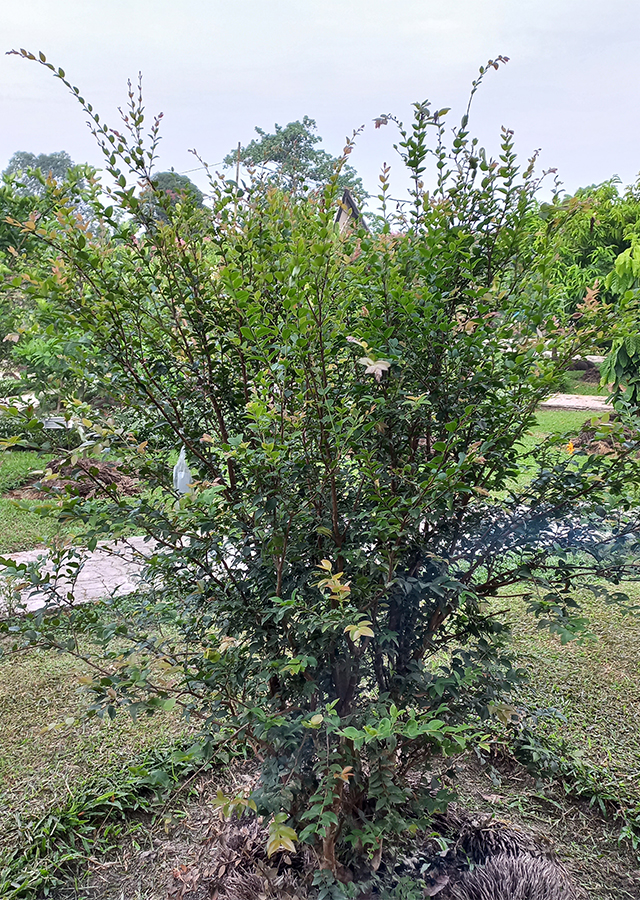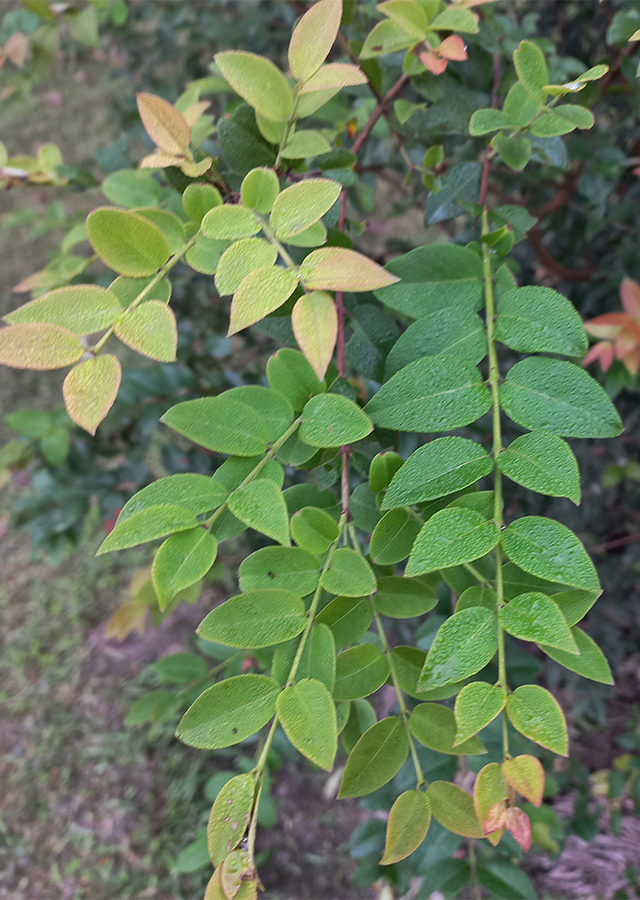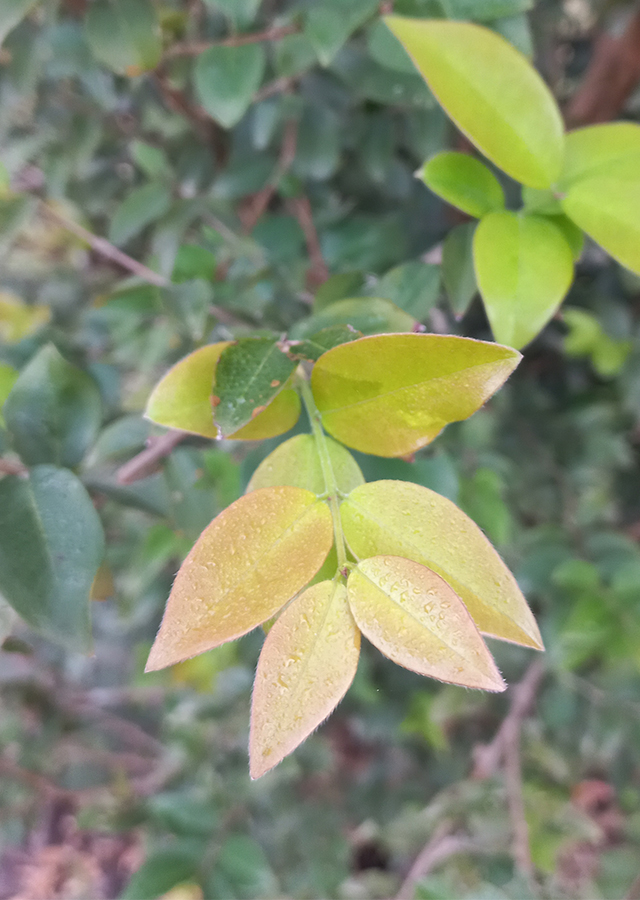Jaboticaba
Plinia cauliflora (Mart.) Kausel
Myrtaceae
Location in our garden
Orchard



Synonym
Eugenia cauliflora (Mart.) DC.
Eugenia guapurium DC.
Eugenia jaboticaba (Vell.) Kiaersk.
Habitus
Shrubs. Jaboticaba is a very slow-growing ornamental evergreen shrub or small tree with a dense crown, that can grow from 3 - 10 metres tall.
Part Used
Fruit
Growing Requirements
Full Sunshine
Habitat
Terrestrial
Overview
Jaboticaba is native from Brazil. A highly esteemed fruit in Brazil, where the plant is often cultivated in domestic orchards. The fruit jaboticaba is often found for sale in local markets. Fruits can be eaten raw or processed into jellies, drinks or fermented into wine. Extracts used as natural dye in food coloring. In Brazil, astringent decoction of sun-dried skins used for treatment of hemoptysis, asthma, diarrhea and dysentery. Also used as gargle for chronic tonsillar inflammation. Studies jaboticaba have shown hypotensive, vasorelaxant, antifungal, antibacterial, hypolipidemic, blood glucose lowering, antiproliferative, antioxidant, nephroprotective, cardioprotective, anti-inflammatory properties.
Vernacular Names
Black jaboticaba, Brazilian grape tree (Engl.), Ponhema (Brazilian), Jia bao guo (Chinese), Jaboticaba de Sao Paulo (French), Jaboticaba, Jabuticaba, Jabuticaba-acu, Jabuticaba-de-sabara, Jabuticaba grande (Portuguese), Guapuru, Iba-puru, Jaboticaba, Yabuticaba (Spanish).
Agroecology
A plant of the tropics, where it is found at elevations up to 1,700 metres. It grows best in areas where annual daytime temperatures are within the range 22 - 28 °C, but can tolerate 10 - 32 °C. When dormant, the plant can survive occasional short-lived temperatures down to about -3 °C, but young growth can be severely damaged at -1 °C. It prefers a mean annual rainfall in the range 900 - 1,500mm, but tolerates 700 - 1,700mm. Requires a sunny position. Prefers a fertile, deep, well-drained, humus-rich, mildly-acid soil. Tolerant of moderate levels of salt in the soil. Plants have a high requirement for iron. Prefers a pH in the range 5.5 - 7.5, tolerating 4.5 - 8.
Morphology
- Barks is reddish-brown and peeling, revealing the multicolored underbark.
- Leaves are simple and leathery, arranged in opposite pairs, lanceolate to elliptic, measuring 2.5-6 cm long and 1.2-2.5 cm wide. Young leaves are salmon-colored.
- Flowers are small, white with numerous stamens, borne directly on trunks and large branches.
- Fruits are globular, measuring 1.5-4 cm in diameter. Unripe fruits are green and become purplish-black when fully ripe. The fruit resembles a grape, but has a thick skin. Fruit pulp is whitish and edible, embedded with 1 to 5 seeds.
Cultivation
Propagated by seed, cuttings and side veneer grafting. Seed has a short viability and so is best sown as soon as it is ripe. Sow in a semi-shaded position in a nursery seedbed. Germination rates can be 90% or more, with the seed sprouting within 20 - 35 days. The seedlings grow quite slowly.
Chemical Constituents
Polyphenols, flavonoids, anthocyanins and dietary fibers, ellagic acid, gallic acid, tannins, quercetin derivatives, anthocyanins, castalagin, vescalagin, and pedunculagin.
Traditional Medicinal Uses
Astringent decoction of sun-dried skins used for treatment of hemoptysis, asthma, diarrhea and dysentery. Also used as gargle for chronic tonsillar inflammation.
Part Used
Reference Sources
- Useful Tropical Plants. 2021. Plinia cauliflora. http://tropical.theferns.info/viewtropical.php?id=Plinia+cauliflora. 13-11-2021.
- Flora Fauna Web. 2021. Plinia cauliflora (DC.) Kausel. https://www.nparks.gov.sg/FloraFaunaWeb/Flora/3/2/3216. 13-11-2021.
- Stuartxchange. 2021. Jaboticaba. http://www.stuartxchange.org/Jaboticaba. 13-11-2021.




